Optimizing accounts receivable department? 5 proven strategies for faster payments and less workload
Up to 37.6% of invoices in Western Europe are paid late. Do you also spend a lot of time remembering outstanding invoices? Or do you find that manual processes are time-consuming and error-prone? Inefficient accounts receivable management puts a lot of pressure on your organization’s cash flow and hinders growth.
A strong accounts receivable department makes all the difference. You get payments (up to 50%) faster. DSO improves and the workload for your accounts receivable department decreases by up to 80%. By making smart adjustments, you prevent payment delays, save time and improve your relationship with your customers.
In this blog, we give you five proven tips to optimize your accounts receivable department. Time for more control and less hassle.
This article in 30 seconds
- A strong accounts receivable department is crucial to your organization. Inefficient accounts receivable management leads to errors, delays and payment delays that impede cash flow and growth.
- You’ll improve your accounts receivable department with these five tips:
- Tip 1: Automate payment reminders through various communication channels.
- Automated communication via email, text, letter, WhatsApp and other communication channels ensure that customers pay faster. This saves time, helps prevent errors and ensures that reminders are sent consistently.
- Tip 2: Use personalized communication templates.
- By professionalizing customer communications in your own corporate style, you create clarity and consistency which reinforces customer trust.
- By segmenting, or categorizing your customers (for example, splitting SMEs and large businesses), your communications better connect with the customer. It not only improves customer satisfaction, but also increases the likelihood of timely payments.
- Tip 3: Offer customers a self-service customer portal.
- With a customer portal, debtors easily view all invoices, make payment arrangements or report disputes. This reduces your team’s workload and gives debtors 24/7 access to their financial affairs.
- Tip 4: Use real-time insights and reporting.
- Real-time data shows which invoices are outstanding and identifies default risks. With these insights, you can take timely action and strategically improve your accounts receivable management.
- Tip 5: Prepare your organization for e-invoicing.
- E-invoicing is becoming mandatory in more and more European countries. By investing now in systems that meet the latest standards, your organization will stay compliant and benefit from more efficient invoicing processes.
- With MaxCredible, you simplify accounts receivable management instantly!
- Automate payment reminders.
- Personalize communication.
- Offer your customers a user-friendly customer portal.
- Choose real-time insights.
- Be prepared for e-invoicing.
- With automated accounts receivable management, you make processes more efficient and customer-focused. Discover the difference with MaxCredible, experience less workload and stronger cash flow.
- Try MaxCredible’s credit management software now for 7 days for free, or request a live demo:
- ☎️ +31 (0)20 344 9070
- 📧 or e-mail to: servicedesk@maxcredible.com
Tip 1: Automate payment reminders
One of the most effective ways to optimize your accounts receivable department is to automate payment reminders. Companies that automate payment reminders see on average 50% faster payments. Repetitive tasks also decrease up to 80%. With MaxCredible, you can even personalize reminders and combine different channels, such as email, letter and WhatsApp.
“At Arxada, automated accounts receivable management led to a significant DSO decrease. And that in just 6 weeks after implementation.”
How does that work in practice, automated payment reminders? Automated reminders “alert” customers to outstanding invoices. These notifications are sent in a timely manner through various channels, such as email, text message, letters, WhatsApp or even by phone. By automating reminders, you can save up to 80% of the time normally spent on manual follow-up.
Without automation, this process can become cumbersome and reminders often lack a personal touch, making it less effective. Smartly segmenting your customers improves response rates. For example, separate your customers by company size, industry, length of relationship, et cetera.
Why are optimized payment reminders essential for your accounts receivable department?
- Automation takes manual work out of the equation. Financial staff no longer has to monitor debtors or send reminders manually.
- With regular reminders or advance notices, customers typically pay faster. No more missed reminders due to human error.
Practical tips for effective reminders:
- Best times: Send reminders on weekdays in the morning, when customers are most accessible.
- Frequency: Start with a friendly reminder just after the due date and intensify when payments are not made. Troubled by late payments a lot? Pick up the phone or send a letter.
- Effective messages: Use a clear and professional tone and make it easy for the customer to pay. Do this, for example, with a payment link, or a link to a customer portal where the customer can see an overview of the invoices. Here he can also report a dispute or request a payment arrangement. This way, the customer can contact you directly. That could look like:
“Dear [Naam],
Your invoice from [bedrag] with number [factuurnummer] expired on [datum].
Pay easily via this link [betaallink] or visit the customer portal for a complete overview of outstanding invoices [link klantportaal].”
Given the high volume of phishing emails, it is important for customers to be able to verify that the email is genuine.
Tip 2: Use personalized communication templates
Personalized communication is one of the most powerful ways to improve customer satisfaction and get paid faster. By tailoring reminders and other communications to the recipient, you create a customer-centric experience that not only appears professional, but also inspires more trust.
For example, customers with high credit ratings receive milder reminders, while high-risk customers receive stricter approaches.
Why personalized communication is important
- Customer focus: Connection to the target audience increases the likelihood of response. Segmenting communication opportunities leads to faster payments and higher customer satisfaction.
- Branding: Consistent look and feel in your communications strengthens your brand and builds trust. A reminder that matches your corporate identity ensures that customers recognize your organization and take it seriously.
Practical examples for personalized communication
- B2C: Segmentation by age:
- Youth (18-35 years):
- First reminder: e-mail (on due date).
- Second reminder: text message (8 days after due date).
- Third reminder: WhatsApp (15 days after due date).
- Fourth reminder: letter (18 days after due date).
- Final reminder: phone call (25 days after due date).
- Seniors (35-80+ years):
- First reminder: e-mail (on due date).
- Second reminder: letter (8 days after due date).
- Third reminder: text message (15 days after due date).
- Fourth reminder: letter (18 days after due date).
- Final reminder: phone call (25 days after due date).
- Youth (18-35 years):
- Other segmentation criteria: Use data such as credit score, region or amount outstanding to further personalize communications.
By professionalizing customer communications in your own corporate style, you create clarity and consistency. This strengthens customer confidence and contributes to timely payments. Through segmentation – for example, by customer type, credit score, region or outstanding amount – communication better matches customer needs.
- B2B: Segmentation by customer type: SMEs vs. large enterprises
-
- SME customers
-
-
- First reminder: email (by due date, with direct payment link).
- Second reminder: WhatsApp or text message (7 days after due date, short and low-key).
- Third reminder: telephone contact (14 days after due date, personal and solution-oriented).
-
-
- Large companies
-
-
- First reminder: email to finance department (by due date, with invoice specifications).
- Second reminder: second email + cc to finance director (10 days after due date).
- Third reminder: telephone contact with accounts payable management (20 days after due date).
- Final reminder: registered letter of default. (30 days after due date).
-
- Segmentation by credit score
-
- Credit score high (low risk customers)
- First reminder: email (by due date, friendly and service-oriented).
- Second reminder: email + text message (10 days after due date, reminder without threat).
- Third reminder: telephone contact (20 days after due date, solution-oriented conversation).
- Credit score low (high risk of default)
- First reminder: email + text message (on due date, clear payment instructions).
- Second reminder: letter by mail (7 days after due date, with legal tone).
- Third reminder: phone call (14 days after due date, on file).
- Final reminder: transfer to collection agency (30 days after due date).
- Credit score high (low risk customers)
- Segmentation by region
- Dutch customers
- First reminder: e-mail in formal style (by due date, direct and businesslike).
- Second reminder: WhatsApp or text message (7 days after due date, short and direct).
- Third reminder: telephone contact (14 days after due date, customer-focused and solution-oriented).
- Dutch customers
-
- International customers
-
-
- First reminder: email in English or local language (by due date, including IBAN/BIC details).
- Second reminder: second email + phone call (10 days after due date, depending on country-specific customs).
- Final reminder: legal letter or transfer to international collection agency. (30 days after due date).
-
-
- Segmentation by outstanding amount
-
-
- Small outstanding amounts (< €500)
- First reminder: email with payment request (by due date, friendly and low-key).
- Second reminder: WhatsApp or text message (10 days after due date, with payment link).
- Third reminder: telephone contact (20 days after due date, customer-oriented).
- Large outstanding amounts (> €10,000)
- First reminder: personal e-mail to management/financial department. (by due date, including call options).
- Second reminder: follow-up phone call with financial officer (7 days after due date, solution-oriented).
- Third reminder: official letter of reminder (14 days after due date, including legal consequences).
- Final reminder: transfer to legal team or collection agency (30 days after due date).
- Small outstanding amounts (< €500)
-
Tip 3: Use a customer portal for self-service
With a portal, customers can resolve disputes or settle payments themselves 24/7, increasing satisfaction. A customer portal allows debtors to easily arrange matters themselves, such as make payment arrangements, view outstanding invoices or report disputes. This reduces the workload and increases customer satisfaction.
Why a customer portal is important
- Customers are increasingly managing their affairs online, without waiting. A portal allows them to take action 24/7, such as:
- Requesting payment arrangements.
- View or pay outstanding invoices.
- Disputes report.
- Automate payment settlements and disputes to save time and workload.
Practical tips for using a customer portal
- Introduce the portal effectively: In email, text or WhatsApp reminders, refer to the customer portal. For example, “Arrange your payment easily through our portal: [link].”
- Encourage use: Offer clear benefits, such as instant access to invoices or the ability to report disputes quickly.
- Manage payment arrangements smartly: Set parameters for payment arrangements, such as the number of installments and minimum amounts, to ensure efficiency and consistency.
A customer portal offers convenience and strengthens your financial grip. This leads to faster payments and a more efficient accounts receivable department.
Personalized communication templates not only make a professional impression, but also increase the effectiveness of your accounts receivable management. A small investment in personalization can yield big results.
Tip 4: Provide real-time insights and reports
Real-time insights and reports form the basis for smart decisions within your accounts receivable department. By having direct insight into important data such as outstanding invoices and payment behavior, you can better anticipate potential risks and make timely adjustments.
Why real-time insights matter
- Insight: You always have an up-to-date overview of outstanding items, payment behavior of debtors and trends in your cash flow. This helps you make quick decisions and address any bottlenecks.
- Strategy: Advanced reporting lets you identify trends and risks, such as peak moments in payment delays. This provides tools for proactive measures.
Managing debtor risks with real-time data
With real-time insights, you can:
- Recognize customers who may not pay on time.
- Monitor invoice due dates and take timely action.
- Gain insight into which disputes occur more frequently and resolve them proactively and structurally.
- Analyze and optimize the performance of your accounts receivable policy.
Practical tips for using real-time reporting
- Focus on the right reports: Use dashboards that focus on key metrics such as:
- Total outstanding debtor balance and age distribution.
- Customer payment history.
- Common disputes.
- Use segmentation: Analyze specific customer groups, such as by region, payment behavior or sector.
- Integrate with other processes: Make sure data from reports is directly applicable, for example, for adjusting payment reminders or identifying defaults.
Tip 5: Ensure compliance with requirements around e-invoicing
E-invoicing is the future. It goes beyond a simple PDF. Invoices are exchanged digitally in a standardized format that can be processed directly by accounting and payment systems. The result? Fewer errors, faster processing and smoother cash flow.
Why switch to e-invoicing?
More and more European countries are making e-invoicing mandatory.
E-invoicing in Germany
From January 1, 2025 all German companies must be able to receive electronic invoices that comply with the EN 16931 standard. De verplichting om e-facturen te verzenden wordt gefaseerd ingevoerd: vanaf 1 januari 2027 voor bedrijven met een jaaromzet van meer dan € 800.000, en vanaf 1 januari 2028 voor alle bedrijven.
E-invoicing in Belgium
The Belgian parliament passed a law in early 2024 making electronic invoicing mandatory for all taxable companies as of January 1, 2026.
E-invoicing in the Netherlands
Although e-invoicing is currently only mandatory for transactions with (state) governments, the European Commission will make e-invoicing for B2B transactions mandatory in all EU member states, including the Netherlands, with the legislative proposal ‘VAT in the Digital Age’ (ViDA). These new regulations stipulates that e-invoicing is expected to be the norm within the EU from 2028.
E-invoicing reduces errors, lowers costs and speeds up processing. And you notice it immediately in improved cash flow.
How do you stay compliant?
- Keep up with the rules. Each region has its own deadlines and requirements. Regularly check the regulations in the countries where you operate so you stay prepared.
- Update your systems. Is your current billing system ready for e-invoicing? If not, consider implementing upgrades or integrations that meet the latest standards.
- Involve your team. A smooth transition starts with well-informed employees. Train your team in the new processes and systems so they know exactly what is expected of them.
E-invoicing is not only a legal obligation. It is also the opportunity to make your processes more efficient and future-proof. By taking steps today, you can stay compliant while benefiting from smoother operations and improved cash flow.
 With MaxCredible’s software, apply all 5 tips immediately!
With MaxCredible’s software, apply all 5 tips immediately!
Want to make your accounts receivable management more efficient? MaxCredible helps you put all five tips into practice effortlessly. That way, you’ll get the most out of your processes and get paid faster.
- Automate payment reminders.
- With MaxCredible, you send payment reminders automatically via email, text message, WhatsApp or letter. Add personal details and integrate payment links so customers can pay directly very easily. Less work for your team, more payments in on time.
- Use personalized communication templates.
- Our flexible templates perfectly suit your customers. Whether it’s young people you reach via WhatsApp, or elderly people who receive a letter – you always communicate in a customized way and in your own house style.
- You can also segment for B2B. For example, split SMEs and large enterprises. This way, your communication will better connect with the customer. It improves customer satisfaction, and also increases the likelihood of timely payments.
- Use a customer portal for self-service.
- Let your customers manage their own affairs 24/7 through our user-friendly portal. They can view invoices, make payment arrangements or report disputes. This way, you reduce your workload and increase customer satisfaction.
- Provide real-time insights and reports.
- With the powerful Tableau dashboards, you can see at a glance which payments are outstanding, common disputes and customer payment behavior. Analyze trends, identify risks and make timely adjustments to your processes.
- Be prepared for e-invoicing.
- Together with Banqup, MaxCredible ensures you are ready for the future. Our solution makes e-invoicing easy, compliant and fully integrated into your systems. Fewer errors, more security.
Or see how KONE did that …
‘By implementing a structured plan, KONE has achieved remarkable improvements. Over a period of two years, outstanding receivables have been reduced by 3 million euros (98.77), the DSO (Days Sales Outstanding) has been reduced by 16 days, and backlogs of new construction and modernization projects have been resolved.
The integration of efficient processes and collaboration with MaxCredible have produced tangible results, including a streamlined complaint handling system and improved accounts receivable management.
Key Results for KONE:
- Bad Debt Provision: 98.77% reduction (Previously over 3 million euros)
- Overdue (>120 days): 99.9% reduction
- Average Outstanding (>60 days): Approximately 88.33% reduction
- Average Complaint Resolution Time: Approximately 60% improvement
- % Complaints to Total AR: 50% reduction
- Current DSO: Approximately 29.5% reduction
With MaxCredible, you can get the most out of your accounts receivable department. Want to see how easy this works? Request a demo today and experience the difference!
Conclusion: Optimize your accounts receivable department with MaxCredible
An efficient accounts receivable department ensures stable cash flow, fewer worries and satisfied customers. Automate processes, personalize communications and use real-time insights for better results.
With these five tips – from automatic reminders to implementing e-invoicing – you will lay the foundation for more efficient accounts receivable management. MaxCredible provides all the tools you need to apply these tips immediately.
From automated reminders to a user-friendly customer portal, MaxCredible makes your processes simpler, faster and more effective. Find out how companies like PF Concept and Arxada improved their cash flow with MaxCredible.
Request a free demo today and benefit from a more efficient accounts receivable department within a week.
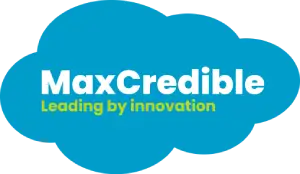
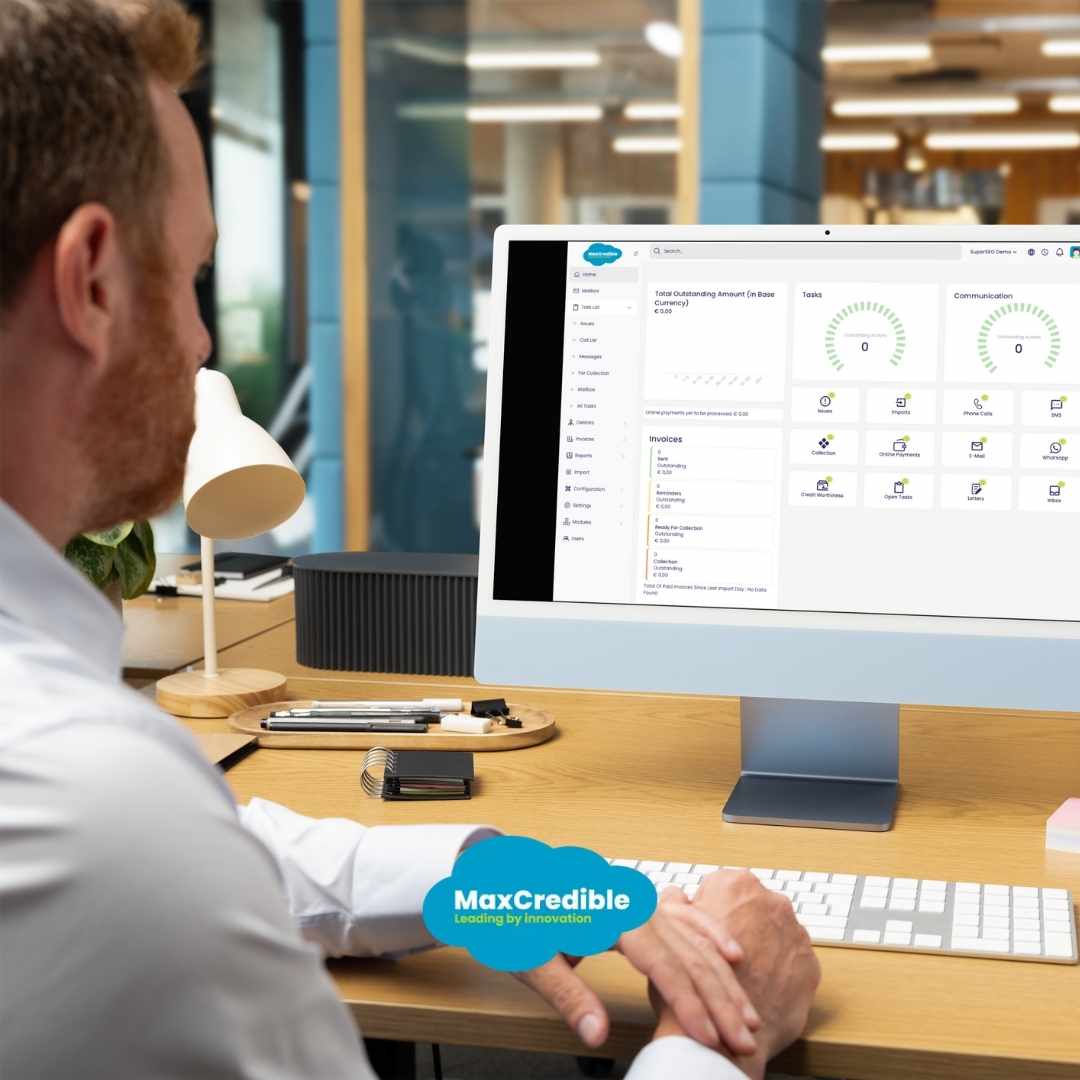
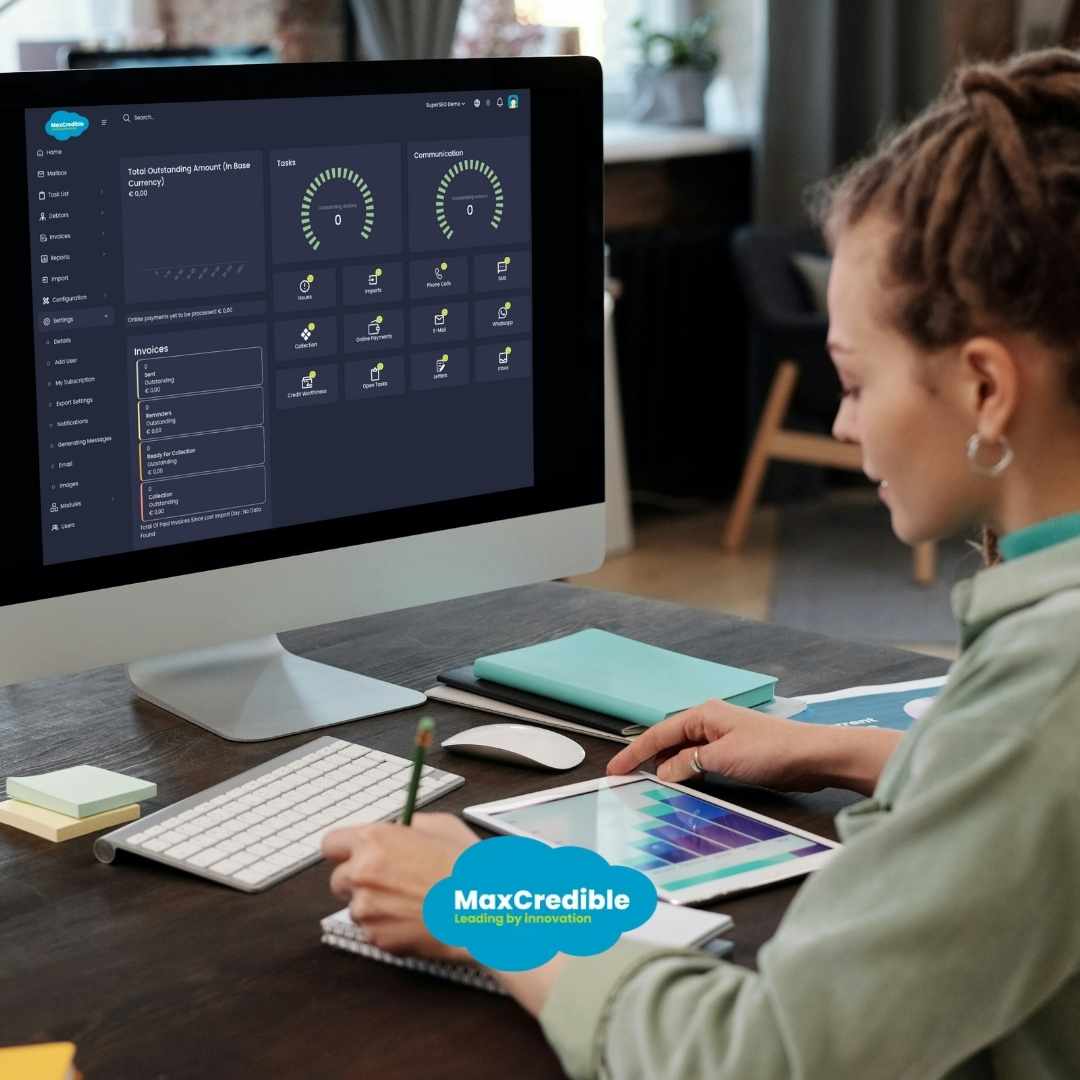
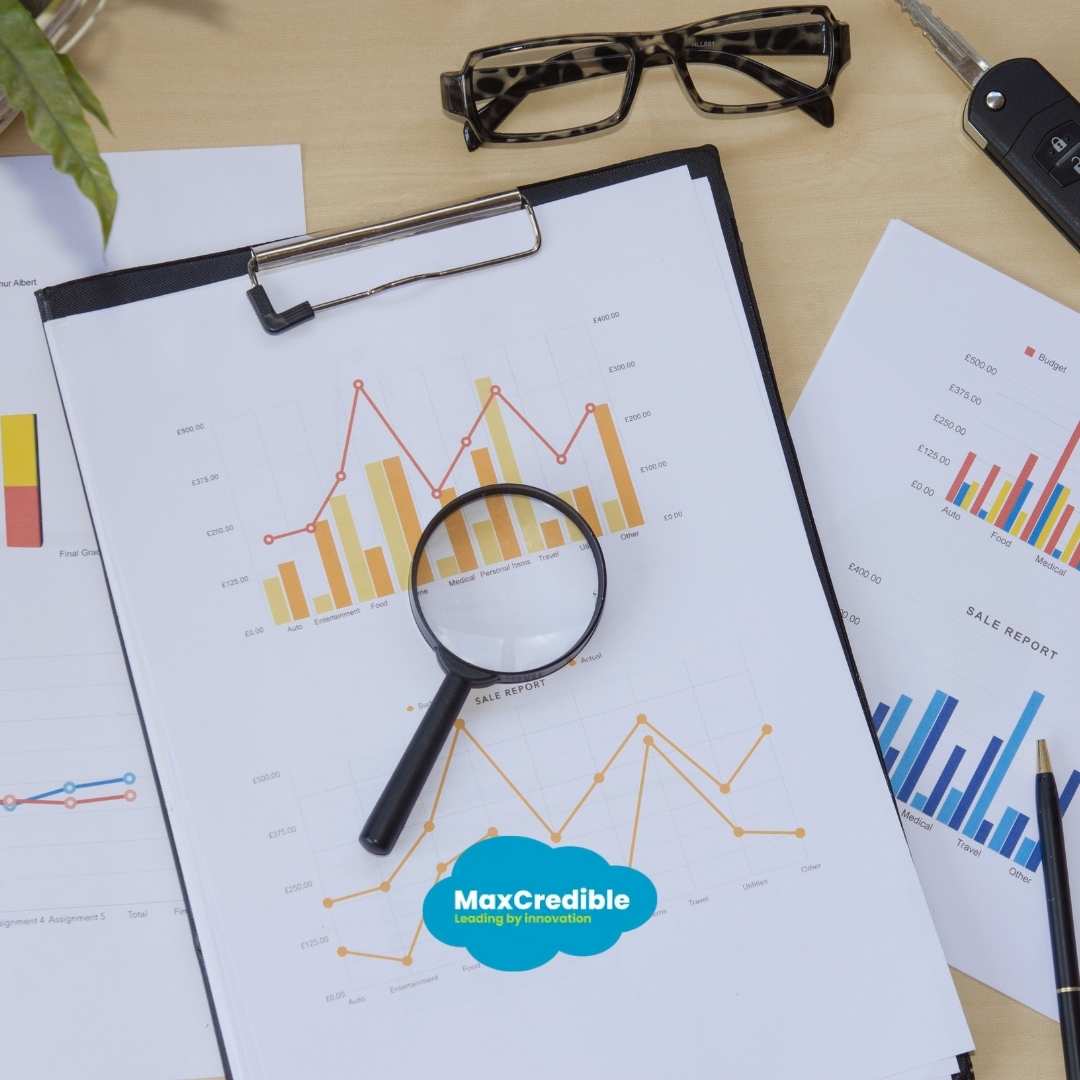
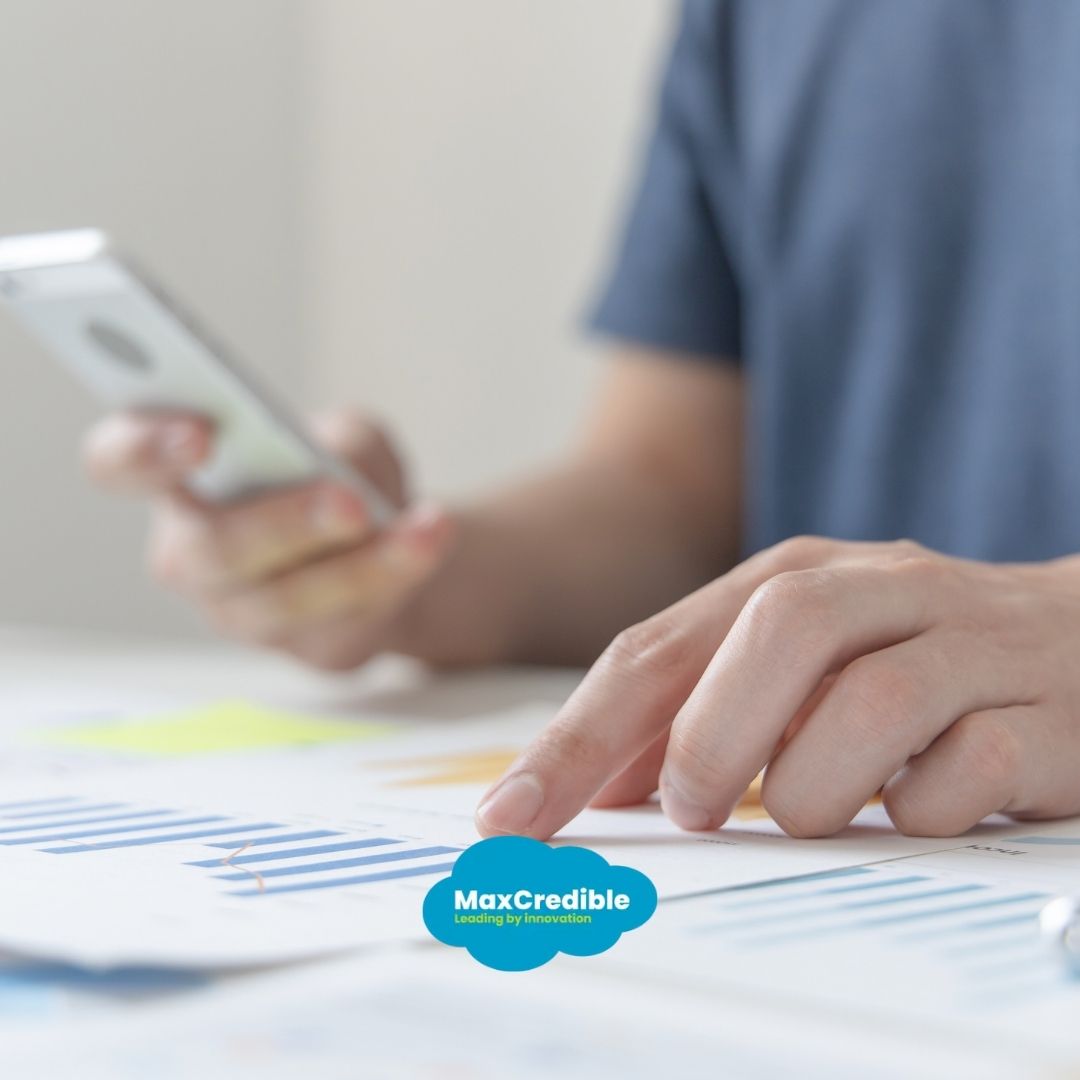

 With MaxCredible’s software, apply all 5 tips immediately!
With MaxCredible’s software, apply all 5 tips immediately!